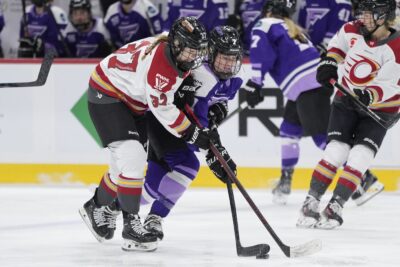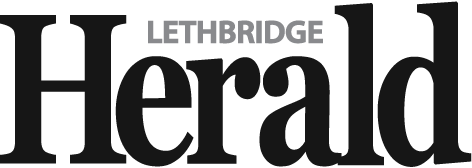Checking in: A more physical style of play becomes the routine at the top of women’s pro hockey
By Canadian Press on February 10, 2025.

Boston Fleet defenseman Megan Keller gave a knowing laugh when reminded of being on the receiving end of Catherine Dubois’ illegal check a month into the PWHL’s second season.
The 28-year-old has delivered and taken enough hits to appreciate that she played a role by putting herself in a vulnerable position.
“That one brought me back to earth here,” Keller said, noting how she was at the end of a long shift and reaching for the puck when the Montreal forward got a step ahead and shouldered her in the head.
“I definitely could have helped myself out a bit there and just fortunate to be all right,” the U.S. national team player added. “But that’s good to learn from, to not put myself in that position and be prepared for that next time.”
Keller was unhurt and Dubois received a one-game suspension, one of four issued along iwth two fines by the PWHL for illegal hits so far this season, including a two-game suspension for Minnesota’s Maggie Flaherty. In its inaugural season, three suspensions and two fines were issued for illegal hits.
Body checking is becoming more and more familiar at the highest level of women’s pro hockey. Checking was previously banned but players overwhelmingly demanded that it be included when the PWHL was launched 18 months ago.
“I think the women have evolved as athletes and want to play the game physically,” said PWHL executive vice president of hockey operations Jayna Hefford. “That’s part of hockey as they know it. And I think it’s hard to avoid contact when there’s players that are this big and this fast.”
The key is getting players to safely adapt to a physical style many were unaccustomed to since it was not — and is still not — allowed across the younger levels of the sport. Minnesota coach Ken Klee, a former NHL player, said it was important for players to take “ownership of protecting themselves. It’s not just the ref’s job to protect them.”
The PWHL took two key steps entering its second season, starting with clarifying its checking rules. Hitting is allowed when both players are moving in the same direction. Open ice hits and checks when players’ backs are turned are banned.
The league also had former NHL star Ryan Getzlaf address players on the best ways to safely deliver a hit and provide tips on avoiding injuries when getting checked.
Getzlaf showed NHL and PWHL videos of illegal and legal hits, while describing how players use their hands and arms, and turn their head and body when knowing a check might be coming. He also consulted with former players to understand how the women’s game has evolved. He said he was nervous about addressing a group of elite players he considers his peers.
“They’re bigger, stronger and faster than they’ve ever been, and I think that was part of it,” Getzlaf said. “They want to make sure that the game was equivalent to the work that they were putting in.”
U.S. and Canadian national team players are more accustomed to hitting because the IIHF has gradually provided referees more leeway in allowing checking when those two rival nations play. That was evident at the world championships in Utica, New York, last year, when a more physical brand was allowed in Canada’s 6-5 overtime win in the gold-medal game, and in Finland’s shootout win over the Czech Republic for bronze.
The rise in physical play came after the IIHF had PWHL officials outline their checking rules with an eye on establishing a new standard for the sport potentially in time for the 2026 Winter Games. The women’s pro league in Sweden first introduced checking two years ago.
Toronto forward Emma Maltais is regarded as one of the PWHL’s most physical players despite her 5-foot-4 frame. It’s a style she learned growing up playing in boys’ leagues, and carried over at Ohio State, where the WCHA has more liberal rules toward checking.
What stands out is how Maltais has kept her game clean with three minor penalties while tied with a league-leading 32 hits heading into the second half of the season.
“I don’t know if it’s because of my smaller stature and don’t really use my hands, or because I’ve got a lower center of gravity to follow through on hits, but I feel like it’s a big advantage when I’m playing physical,” Maltais said.
“The cool thing about hitting is if you finish a hit, that player feels that hit not only in the moment, but the next time you forecheck them,” she added. “And I think it’s something that gets the girls going.”
The hope among PWHL officials is introducing hitting at the pre-college level to help girls begin adapting.
“I think it’s an important piece that we start some of the education around it sooner,” New York Sirens coach Greg Fargo said after spending 12 seasons coaching at Colgate. “It was really interesting when the PWHL became widely known to be a very physical league and to witness that as a fan. I think some of that naturally trickled down to the college ranks where they started a little bit more to color outside the lines.”
As Sirens coach, Fargo has appreciated how important hitting is at the PWHL level.
“It’s not just about being physical and finishing checks, but being physical is a real pathway to creating more space and more room offensively,” he added. “My guess is the physicality is only going to ramp up as we get into the second half of the season and the playoffs.”
___
AP Women’s Hockey: https://apnews.com/hub/womens-hockey
John Wawrow, The Associated Press
28-27


